| Two
New Books on E.O. Lawrence Sea Squirt Genome Sheds Light On Vertebrate Evolution
Two New Books on E.O. LawrenceReview by Paul Preuss Ernest Lawrence is a protagonist in two recent histories that deal with dramatically different periods of his career. Taken together they yield a scientific and personal portrait of a life filled with human triumph and failing. Science historian Per Dahl, author of From Nuclear Transmutation to Nuclear Fission, 1932-1939, is a guest in Berkeley Lab’s Acceleration and Fusion Research Division and a physicist whose long career has taken him to varied posts in Europe and the United States (see Currents, Oct. 8 1999). His book is aimed at the technically literate, a cheerful saga of “what in effect became a race, ca 1930, between four laboratory teams to be the first to achieve the transmutation of atomic nuclei with artificially accelerated nuclear projectiles.” Lawrence lost the first round to Cockroft and Walton of Cambridge University in 1932. It was only the beginning, though. The invention of the cyclotron won Lawrence international fame as well as the University of California’s first Nobel Prize, and eventually gave birth to today’s giant particle accelerators. These were the years when Lawrence’s characteristic leadership style emerged: ever harder work, ever grander schemes, ever bolder promises, ever bigger research teams, and an ever widening network of connections among the scientific, academic, and industrial elite. Even his biggest setbacks did not dim his optimism. Dahl’s account is wonderfully informative about the personalities who probed the nucleus during the 1930s. Ernest Lawrence’s chief American rival at the time was his boyhood friend from South Dakota, Merle Tuve. Operating from the Department of Terrestrial Magnetism at the Carnegie Institution in Washington, D.C., Tuve and his team built successively larger artificial lightning machines, culminating in the 5-million-volt Atomic Physics Observatory they used to confirm uranium fission in January 1939. Enrico Fermi and Neils Bohr were among the distinguished scientists looking on. The appeal of high-voltage machines was their powerful current; cyclotrons boosted much fewer particles, although to higher energies. Dahl makes the technical issues clear with the aid of many engineering drawings and photographs. A curious sidelight that emerges from Dahl’s book is the disproportionate role played by Norwegians in American nuclear science. Lawrence and Tuve were Norwegian-Americans; Lawrence’s cyclotron was inspired by Norwegian Rolf Wideroës’s sketch of a linear accelerator, while Tuve’s principal colleagues were another Norwegian-American, Lawrence Hafstad, and a long-term Norwegian visitor with the odd name, to American ears, of Odd Dahl. If any relation, author Per Dahl, born and raised in Norway, does not say. (The Kellogg Radiation Laboratory at Caltech, the third prominent nuclear physics laboratory in the U.S., was led by a Dane: Danish-American Charles Christian Lauritsen.) Despite their friendship and mutual respect, in 1934 it fell to Merle Tuve to convince Ernest Lawrence that he had blundered in arguing for a “light” neutron and an unstable deuteron — observations, Tuve showed, that resulted from contamination in Lawrence’s cyclotron experiments. Although embarrassed, Lawrence’s reaction, recorded in a letter to Ernest Rutherford, was characteristic: “I certainly appreciate … that it is easy to fall into error, and that a good deal of cautious work must be done.” Pride, confidence, love of the work, and delight in the company of his supporters and collaborators — and even his toughest competitors — were the hallmarks of Lawrence’s prewar victories in nuclear science. The fruits of success were scientific praise and academic influence, manifested in research facilities like the grand new 184-inch cyclotron. * * * World War II changed all that. The war’s prelude and long aftermath are the setting for author Gregg Herken’s Brotherhood of the Bomb, written for a general audience. Herken, a curator and historian at the Smithsonian Institution, tells of victories rendered hollow, old friendships soured, a moral compass wavering, and the onset of disease that eventually ended Lawrence’s life prematurely. At first, Lawrence turned his energies to the defeat of Nazi Germany with the same enthusiasm he had applied to exploring the nucleus. Complications were few as long as Germany was the target, but Germany surrendered before the U.S. could even test a bomb, while Japan fought on tenaciously. Lawrence was the only member of the high-level panel convened in 1945 by Secretary of War Henry Stimson, which included Robert Oppenheimer, Fermi, and other scientists, who argued that the bomb should be demonstrated before it was used. He was quickly overruled. Lawrence and Oppenheimer’s roles would soon be reversed. After Stalin’s Soviet Union rapidly emerged as the postwar enemy, Lawrence pressed for the development of a thermonuclear “superbomb” which Oppenheimer considered impractical, not to mention immoral. Lawrence developed a number of schemes to further the construction of the super, but only one eventually bore fruit: the establishment, with Edward Teller’s help, of a second weapons lab in Livermore. Livermore’s first tests were ludicrous failures, but today it accounts for most of the designs in the U.S. arsenal. Lawrence and Oppenheimer had been colleagues at Berkeley since the 1930s, so utterly opposite in temperament and intellectual style that, as Herken quotes a mutual acquaintance, “I can only think that perhaps when they were such really good friends, maybe they never really understood each other.” In the spring of 1954 Lawrence came close to testifying against Oppenheimer at the Atomic Energy Commission hearings that deprived his former friend of a security clearance. Herken reports that Lawrence had second thoughts about the consequences of testifying but would have gone ahead, had a severe attack of colitis not intervened. Yet while doing everything he could to promote the development of the H-bomb, Lawrence was also working to bring about nuclear disarmament. The method he favored most was face-to-face discussion with Russian scientists, both informally and in venues like the test-ban negotiations held in Geneva in the summer of 1958. Those talks were making rapid progress when another attack of colitis forced Lawrence to fly home, where he died shortly after entering Stanford Hospital. Even taking into account differences of background, motive, and style of the books’ authors, From Nuclear Transmutation to Nuclear Fission and Brotherhood of the Bomb give rise to a consistent picture of Lawrence. An extrovert with a gift for experiment, he was utterly unlike his once-upon-a-time friend, the brooding theorist Oppenheimer, except in this: the nuclear genie they freed cast its dark shadow across both their lives. From Nuclear Transmutation to Nuclear Fission, 1932-1939
Brotherhood of the Bomb: The Tangled Lives and
Loyalties of
Sea Squirt Genome Sheds Light
|
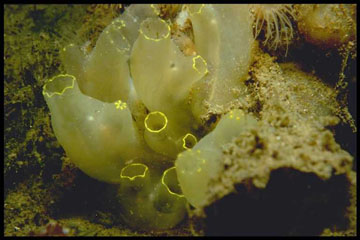 |
In an article for the Dec. 13 issue of Science, an international consortium of resear-chers at the U.S. Department of Energy’s Joint Genome Institute (JGI), Japan’s National Institute of Genetics in Mishima, the Department of Zoology at Kyoto University, and two dozen other research institutions report on the draft sequencing, assembly, and analysis of the genome of C. intestinalis.
By comparing Ciona’s genome with those of the human and other animals, the researchers were able to glean new insights into the evolutionary origins of the human brain, spine, heart, eye, thyroid gland, and nervous and immune systems, as well as a better understanding of both chordate and vertebrate development in general.
“We have known for years that despite their humble appearance, sea squirts have a number of physical characteristics that are similar to vertebrates,” said Eddy Rubin, director of the JGI and head of Berkeley Lab’s Genomics Division. “Through a comparison of their genomes, we can now understand how these relationships are reflected at the molecular level, and how these similar systems and gene sets evol-ved in different ways over 500 million years from a common ancestor.”
Berkeley Lab is one of the three DOE national laboratories that founded the JGI in 1997, along with Lawrence Livermore and Los Alamos National Laboratories.
The sea squirt is a urochordate, or “tunicate,” found in shallow ocean waters around the world. The barrel-shaped adult squirt attaches to rocks, piers, boats and the sea bottom, and feeds by siphoning seawater through its body, using a basket-like internal filter to capture plankton and oxygen.
It is as juveniles, however, that the squirts reveal their kinship to humans. One day after an egg is fertilized, it develops into a small tadpole comprised of only about 2,500 cells. The tadpole soon finds a home, settles down, and metamorphoses into its immobile adult form; but while still in its swimming stage the tadpole has a stiffened rod running the length of its tail called a notochord, the forerunner of our backbone, as well as a primitive nervous system and a pumping heart.
Ciona’s close relationship to vertebrates, along with its compact genome — about 160 million base pairs, one-twentieth the size of the human — and small cell complement make it an ideal model organism for studying chordate development and DNA regulatory networks.
The JGI’s comparative genomic studies of multiple organisms, which are funded by the Office of Biological and Environmental Research in DOE’s Office of Science, are helping to determine the functions and regulation of the genes and other DNA regions in the human genome that play a crucial role in human health.
The Ciona sequence analysis revealed that its genome contains about 16,000 genes, about half the number in humans and other vertebrates. Daniel Rokhsar, head of the JGI’s computational genomics department, said one reason for this “slimmed-down” DNA sequence is the fact that Ciona has single copies of a large number of genes that are present in multiple copies in vertebrates.
“One of two things can happen to these redundant copies,” Rokhsar said. “Either they mutate away and disappear, or they evolve to perform other functions. By looking at Ciona’s genome, we can see what innovations occurred in the human lineage that enabled us to advance in complexity.”
The Ciona analysis revealed a number of vertebrate-like genes, including complement, lectin, and Toll-like receptor genes, that researchers said may play a role in Ciona’s primitive “innate” immune system. The scientists found no evidence, however, of the hundreds of key genes, such as immunoglobulin or T cell receptors, involved in the adaptive immune systems found in higher vertebrates.
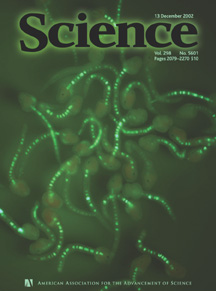 |
Ciona is also missing a number of the important Hox genes that determine vertebrate body structure. In some cases only single Hox genes are present, while some appear to be entirely absent. On the other hand, Ciona has light-sensing genes very similar to those of vertebrates, as well as genes involved in the formation of the heart and of cells that accumulate iodine, much like the human thyroid gland. Ciona, however, uses a protein called hemocyanin — rather than the hemoglobin used by most other animals — to transport oxygen through its bloodstream, and it lacks the genes to produce steroids and histamines.
The researchers were surprised to find that in some ways, Ciona has more in common with bacteria, fungi and plants than with vertebrates: the genes it uses to produce the fibrous tunic that supports its feeding siphons are similar to the genes involved in metabolizing cellulose. “Because cellulose is typically produced only by plants and bacteria, its presence in (sea squirts) is a curious lineage-specific evolutionary innovation,” the researchers stated.
“Just like vertebrates, modern sea squirts have been evolving and advancing in their own way from our common origins,” said Rokhsar. “The Ciona genome reflects the ways they have mobilized many of the same genetic raw materials that we both inherited to serve their own specialized needs.”
Ciona was sequenced using the whole-genome shotgun method, which has also been used to sequence the human, pufferfish, mouse, and rat genomes. Earlier this year the JGI convened a Ciona “annotation jamboree” in Walnut Creek, bringing together an international group of experts from the United States, Japan, Italy, France, Scotland, Canada, and Australia to analyze the sea squirt genome and begin disentangling its evolutionary relationship with other animal genomes.
“Bringing the community together was essential,” Rokhsar said. “Only by a collaborative effort could we hope to get a coherent sense of the relationship of the Ciona to other organisms, which in turn could lead to important applications for human health.”
In addition to analyzing the Ciona’s genome, JGI researchers are also conducting experiments to help identify the function of noncoding sequences of DNA lying between the genes, which regulate gene expression and determine when and where in the organism a given gene is turned on and off.
Understanding the complex orchestration of gene networks is crucial to much of contemporary biomedical research. Results of those studies are expected to be published in early 2003. n
Charles Osolin is the public affairs officer for the Joint Genome Institute
By Paul Preuss
Tetsuya Sato visited Berkeley Lab on Dec. 6 to describe the world’s most powerful supercomputer, Japan’s Earth Simulator (ES), of which he is director-general. Sato showed samples of work in progress and discussed future research with an audience of the Lab’s Computing Sciences staff and NERSC users, who overflowed the fifth-floor Bldg 50A conference room where the talk was held.
ES began operation in March of this year and on April 18 announced performance of almost 36 teraflops (trillion operations per second) at an efficiency of over 87 percent. This is five times the capacity of the world’s supercomputer runner-up, Lawrence Livermore’s ASCI White.
Sato recalled the beginnings of the Earth Simulator project in 1997, the year of the Kyoto Accords on global climate change. “So there was a strong wind pushing us to develop this project,” he said, namely a desire to understand all factors affecting the climate of the planet and to “live in harmony with the Earth.”
The gigantic, special-purpose machine was built as a “virtual planet Earth,” although physically it looks more like a spaceship. Surrounded by offices and research facilities on a campus in Yokohama, 40 kilometers southwest of Tokyo, the computer occupies its own windowless, double-walled, double-floored, two-story building, isolated and shielded against electromagnetic fields, noise, lightning strikes, and earthquakes, with its own cooling plant and electrical substation.
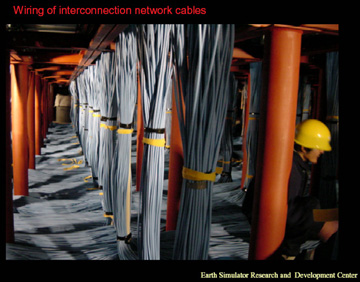 Wiring of interconnection network cables at the Earth Simulator, located in Yokohama, Japan. |
It’s a robotic spaceship at that, usually with no one inside. Each of its 640 “nodes,” built by NEC, is a supercomputer in its own right. The cabinets house eight vector processors with 16 gigabytes of shared memory and are capable of 8-gigaflops peak performance; they are interconnected by a network that can transfer 12.3 gigabytes of data per second.
Beneath the machines, a lower floor is crowded with enormous bundles of cable, like a cave full of stalactites. “The cables are as long as the Japanese Islands, from Hokkaido to Okinawa,” Sato said. “Japan is not quite as long as California,” he added with a laugh, “but we have a big supercomputer!”
Sato said “most scientists want to write their programs in FORTRAN,” but the UNIX-based operating system accomodates custom-designed programs as well. No new project is permitted to run on all 640 nodes until it has proven itself on a small subset of processors.
The Earth Simulator was sponsored by a collaboration including Japan’s space development agency, its atomic energy research institute, and the marine science and technology center, JAMSTEC. Sato, summarizing the delicate weave of interacting interests behind ES, which is now controlled by JAMSTEC alone, said that while the Earth Simulator Center “is not a government institution, all its money comes from the government.”
Sato showed a number of short movies of atmospheric and ocean temperature models, exhibiting the extraordinary detail achieved by depicting world-wide ocean currents and cloud cover with resolution as high as 10 kilometers, much higher than other global climate models. Evaluating these models against real-time observation “is a much, much heavier challenge, not yet done,” said Sato, although comparisons with some datasets, such as measures of ocean salinity, are close to completion.
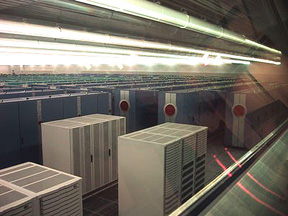 Inside the Earth Simulator: Even the light is piped in by optical fibers to reduce the influence of stray electromagnetic fields. |
Climate is not the only concern of the Earth Simulator Center, which has working groups for the solid Earth (geophysics), advanced visualization, and “holistic” (whole-system) algorithms as well. In the future, Sato, who until a year ago directed computer simulation at Japan’s National Institute for Fusion Science, plans for a significant share of the computer’s time to be devoted to “innovative proposals,” including fields outside Earth studies.
But not just any bright idea will do. “We will accept proposals only from consortiums of collaborators,” Sato said, “not just from one guy who gets all the credit — that’s not fair,” a sentiment that might seem typical of the Japanese culture.
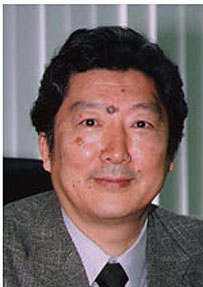 Tetsuya Sato |
Indeed, much of the charm of Sato’s presentation was his non-Western perspective. Concluding his talk, he showed his “favorite cartoon” of the way the scientific process works, in which scientists were depicted as farmers working to grow crops in the fields and data processors were depicted as chefs preparing the dinner.
At this point, Berkeley Lab Deputy Director Pier Oddone interjected, “I should warn you, Professor Sato, that in the U.S. the metaphor of ‘cooking the data’ may not go over too well,” which brought a round of laughter led by Sato himself.
The scientists and managers who received Sato so warmly are among his stiffest competitors. NERSC has proposed a supercomputer dubbed “Blue Planet” intended to deliver twice the sustained capability of the Earth Simulator at half its cost.
John Shalf of the Visualization Group, who attended Sato’s presentation, explained the cordial reception this way: “The achievement of the Earth Simulator has reinvigorated the whole debate over the unique role of supercomputers in meeting scientific challenges.”
DOE is moving ahead on its plans to develop technologies that are aimed at reducing greenhouse gas emissions linked to warming, Under Secretary of Energy Robert Card told about 1,500 scientists and other attendees of a government workshop on climate change science earlier this month. “We no longer worry about ‘Is this a real issue?’ We assume it is,” said Card. “President Bush set a goal of stabilizing greenhouse gas emissions and told us: ‘Go figure it out’.”
To DOE, which is tasked with developing technologies to combat climate change, “greenhouse gases are not a good thing,” Card said. He stressed, however, that an interagency group studying the science of climate change — alternately led by DOE and the Commerce Department — “has not adopted that conclusion.”
DOE is focusing its R&D efforts on developing hydrogen fuel cell vehicles, conducting carbon sequestration research, and enhancing the role of nuclear power. As Energy Secretary Spencer Abraham later told the same workshop, “We are moving aggressively in those areas where the course is clear and where the technology makes sense.”
DOE should seek $885 million to construct four biological research centers that would build on the genome studies now underway at various national laboratories, including Berkeley Lab, and could eventually lead to the use of microorganisms to generate energy and for carbon sequestration. That’s what Marvin Frazier, director of the Office of Biological and Environmental Research (BER) life science division, told members of BER’s advisory committee at a meeting in Washington.
“The biotechnology revolution offers solutions to DOE missions, and the genome is the key to major advancements in understanding and applications,” said Frazier.
Under the proposal developed by BER and DOE’s Office of Advanced Scientific Computing, DOE would construct four “Genomes To Life” user facilities at locations to be determined. Each site would perform special functions: Facility I would produce and characterize proteins; Facility II would analyze proteomes (the full complement of proteins encoded in an organism’s genome); Facility III would characterize and develop images of molecular machines; and Facility IV would pull together the work of the other three by analyzing and creating models of cellular systems.
“This proposal lays the foundation for studying microorganisms,” said Frazier. “We’d do the basic science so that other DOE offices, like Energy Efficiency and Renewable Energy, can have a broader suite of options to choose from.”
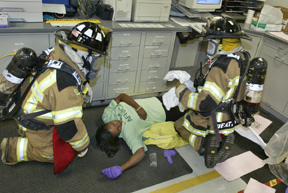 |
Naomi Kinyanjui from Dosimetry in EH&S plays victim for Alameda County Fire Department responders at the joint exercise between Berkeley Lab and Alta Bates Summit Medical Center on Dec. 5.
The exercise began at Building 85 and ended with "victims" Naomi and David Rodgers (also of EH&S) being “treated” through the Alta Bates emergency department. Photo by Roy Kaltschmidt
The Department of Energy’s Oakland Operations Office, which for years has provided support to the Berkeley Site Office for oversight of Berkeley Lab and other DOE labs in the Bay Area, will be closed as of Sept. 30, 2004.
The National Nuclear Security Administration (NNSA), managing agency for DOE-Oakland, announced the closure and other measures on Tuesday. They were described as streamlining actions responding to the President’s management agenda. The changes include a new NNSA organizational structure, effective today.
Support for the Berkeley Site Office will be transferred to other DOE sites. Berkeley Site Manager Dick Nolan said the transition over the next two years “will be challenging for those in Oakland and for the staff here at the Laboratory. But we trust that, in terms of getting things done and conducting Department business, the changes should be transparent to people at Berkeley Lab.”
Nolan called the initiatives “responsive to the President’s call for streamlining operations and oversight while clarifying roles and responsibilities.” And Secretary of Energy Spencer Abraham applauded the NNSA action, which he said “implements the President’s desire to make government more efficient and to focus on clear lines of responsibility.”
The moves will eliminate a layer of management — the operations field office system — and set NNSA on course to achieve a 20 percent reduction in federal personnel. Beginning today, all site offices that oversee NNSA contractor operations, including Oakland, report directly to the NNSA administrator.
An NNSA Service Center, located in Albuquerque, NM, will be established using expertise from the former operations offices, which will be phased out. Personnel reductions will be accomplished through managed attrition and incentives such as buyouts. Reductions in force will be an option of last resort. The Oakland office, located at 1301 Clay Street in the Federal Building, currently employs 331 federal personnel.
Camille Yuan-Soo Hoo, former Oakland Operations Office manager, becomes site office manager at Livermore. Her former deputy at Oakland, Jim Hirahara, is the new director of the Albuquerque Service Center.
The chair of the UC Board of Regents, John Moores, has named a nine-member special committee to conduct the search for a successor to retiring UC President Richard Atkinson, who will step down on Oct. 1, 2003.
Said Moores, “In the months ahead, the committee will conduct a thorough nationwide search for a new president with the vision, scholarship, and leadership to maintain the exceptional quality and accessibility of the University of California.”
The committee will invite the Academic Council to appoint an academic advisory committee to assist in screening candidates. Student, staff, and alumni advisory committees will also be appointed. For the list of committee members, see http://www.berkeley.edu/news/berkeleyan/ 2002/12/04_srch.html
Published twice a month by the Communications Department for the employees and retirees of Ernest Orlando Lawrence Berkeley National Laboratory. Ron Kolb, Communications Department head.
EDITOR: Monica Friedlander, (510) 495-2248, msfriedlander@lbl.gov
STAFF WRITERS: Lisa Gonzales, 486-4698; Dan Krotz, 486-4109, Paul Preuss, 486-6249; Lynn Yarris, 486-5375
CONTRIBUTING WRITERS: Jon Bashor, X5849; Allan Chen, X4210
FLEA MARKET / CALENDAR: 486-5771
fleamarket@lbl.gov /currents_calendar@lbl.gov
Lawrence Berkeley National Laboratory,
Communications Department, MS 65
One Cyclotron Road, Berkeley CA 94720
Tel: (510) 486-5771 Fax: (510) 486-6641
Berkeley Lab is managed by the University of California for the U.S. Department of Energy.
“Understanding this process is one of the keys
to understanding the biophysics of cells”
By Dan Krotz
Using electron microscopy and three-dimensional computer reconstruction, Berkeley Lab researchers have produced the most detailed ever image of a microtubule, a tube-shaped weave of proteins that help cells maintain their shape, transport materials, and divide.
The 8-angstrom resolution image opens the door for a better understanding of how certain proteins bind to microtubules and contribute to their stability or instability — a fundamental component in the life cycle of a cell.
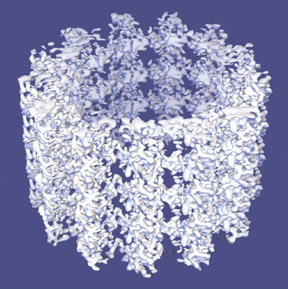 |
Until now, researchers have imaged microtubules at a resolution of only about 20 angstroms, where one angstrom equals one ten-billionth of a meter. Although this is an extremely close-up view, such images provide only a rough portrayal of how proteins bind with microtubules. Precisely where and how these bonds occur remained unclear. That’s because the molecular interactions that regulate cellular function occur on a scale much smaller than 20 angstroms. For example, the average length of a protein bond is about 1.5 angstroms, and only at higher resolutions, such as at 8 angstroms, do these interactions begin to come into focus.
“We’ll be able to better see the secondary structure of the proteins that bind with microtubules, as well as the binding sites,” says Kenneth Downing, a biophysicist in the Life Sciences Division who developed the 8-angstrom resolution image along with Huilin Li, David DeRosier, William Nicholson, and Eva Nogales.
The fundamental building block of microtubules is a globular protein called tubulin, which join in pairs to form a tubulin dimer. These building blocks stack head to tail to form protofilaments, which attach side to side like wooden slats in a barrel to form a microtubule. Because protofilaments are like compressed springs, these side-to-side bonds are under constant risk of shearing apart — a phenomenon biophysicists suspect contributes to microtubule instability, and ultimately, disassembly.
Equally intriguing are bonds formed by special proteins called microtubule associated proteins, which attach to the exposed portions of protofilaments and somehow act as clamps, preventing the protofilamets from springing apart. Whichever force wins out in this constant struggle between stability and instability depends on where a cell is in its life cycle. During some stages, the microtubule associated proteins stabilize the microtubule by holding fast to the protofilaments. But during cell division, these bonds weaken and the protofilaments separate. This triggers microtubule disassembly, which, in turn, allows the assembly of a new set of microtubules.
To elucidate these interactions, Downing and his colleagues have sought closer and closer views of microtubules. In 1998, they employed a multi-step process to develop a 20-angstrom resolution map. First, they used electron crystallography to image tubulin dimers at a resolution of 3.5 angstroms. Separately, their collaborators at San Diego’s Scripps Research Institute used cryoelectron microscopy and computer-based helical reconstruction to develop a 20-angstrom resolution, three-dimensional framework of a microtubule. Finally, the Berkeley Lab team docked the tubulin crystals into this framework, creating a 20-angstrom resolution image of how tubulin forms protofilaments, and how these form microtubules.
It was a good start, revealing much about a microtubule’s detailed architecture, but a 20-angstrom resolution image is simply too coarse to depict the interactions between adjacent protofilaments.
Downing’s team needed to go below 10 angstroms. To get there, they abandoned helical reconstruction, which can’t account for the minute distortions that stray from a microtubule’s otherwise helical structure. Instead, they used a more precise electron microscopy technique called single particle imaging.
In this manner, the Berkeley Lab team segmented microtubule microscopy images into sections big enough to properly orientate, but small enough so that each section didn’t possess serious distortions. Data from 89 microtubule images, comprising 1,200 segments and about 200,000 tubulin monomers, were combined to produce an 8-angstrom resolution map. Finally, as in their earlier work, they nested tubulin images into this map. Only this time, because the resolution of the microtubule map was much higher than before, they were able to more precisely dock the tubulin. The result is a near-atomic scale model.
“At this resolution, we can see a tremendous amount of detail,” Downing says.
Such detail is already yielding dividends. For starters, tubulin dimers had never been closely studied as they naturally appear in a microtubule. They’ve only been studied in crystalline sheets of tubulin that form in the presence of zinc ions, a controlled setting necessary to produce electron crystallography images. However, these crystalline images can only depict the interactions that link tubulin dimers head to tail to form protofilaments. The all-important lateral bonds, in which tubulin dimers in the protofilaments link side-to-side to form a microtubule, couldn’t be closely analyzed. Now they can.
“We’ll get a much better picture of the critical interactions between protofilaments,” Downing says.
The 8-angstrom resolution image could also shed light on how microtubule associated proteins bind along the crests of a microtubule and contribute to its stability. For example, one binding site, called the C-terminus, somehow promotes instability when it is unoccupied. This effect is neutralized when one of several different kinds of microtubule associated proteins attach to the C-terminus and tie it down.
“Understanding this process is one of the keys to understanding the biophysics of cells,” Downing says. “We’ve opened the door for a lot other research. We need to use this image to explore how protein interactions regulate microtubules and affect the cell cycle.”
By Dan Krotz
On Saturday, Dec. 14 at 1:15 p.m., the first ion beam was transported through the front-end system at the Spallation Neutron Source (SNS) in Oak Ridge.
“The H- beam was generated in the ion source, injected into the radio frequency quadrupole for acceleration to 2.5 MeV, and transported through the medium energy beam transport to the beam stop — and it came through on the very first shot, “ says Rick Gough, who heads the Ion Beam Technology program for Berkeley Lab’s Accelerator and Fusion Research Division. “We’re delighted, and our congratulations go out to the entire SNS team.”
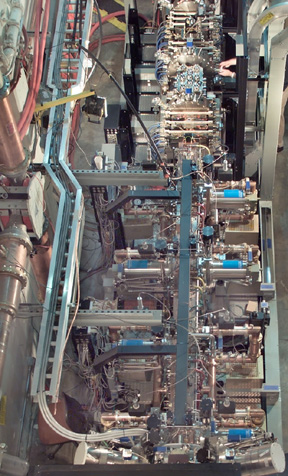 The front-end system – Berkeley Lab’s contribution to the $1.4 billion SNS project – is the first subsystem to be commissioned and successfully tested. |
The $1.4 billion SNS project is a multilaboratory collaboration sponsored by the Department of Energy. Presently under construction at Oak Ridge National Laboratory in Tennessee, the SNS facility will provide the world’s most intense pulsed beams of neutrons, the electrically neutral subatomic particles that can serve as deep-penetrating, nondestructive probes of solid materials.
Berkeley Lab’s contribution, the front-end system, is the first SNS subsystem to be commissioned and successfully tested. It generates a beam of negative hydrogen ions, which will undergo further acceleration and accumulation processes and end up as a high-energy proton beam hitting a mercury spallation target, where the protons are converted into neutrons. The average proton beam power of 1.4 million watts will make the SNS nearly 10 times more powerful than today’s strongest pulsed neutron source. Beam operations for experimenters are scheduled to start in 2006.
“The quality of design and construction that went into the front end was exemplary,” said Rod Keller, Berkeley Lab’s senior team leader for the SNS front end systems. “This was proven by the performance demonstrated earlier in Berkeley and now again with the rapid recommissioning at Oak Ridge. Although by far the smallest of the SNS subprojects, our equipment has been under the spotlight of the accelerator community, and it has stood up to the challenge very well.”
The Berkeley Lab team, consisting of more than 40 scientists, engineers and technicians, began construction of the front-end system in the fall of 1998. After it was built and tested at Berkeley Lab, it was then disassembled into four components and shipped to Oak Ridge in June of this year, where it was reassembled and recommissioned.
“It’s a complex piece of equipment, and it takes a lot of careful effort to ensure it works properly after it has been taken apart, shipped and reassembled,” Gough said.
Forwarding Emails in a Group
Ever wondered how to forward numerous emails to a single email address without having to forward each one individually?
The Computing Infrastructure Technologies Group offers the following solution for users of the Lab’s Netscape Communicator email client. Note that the procedure will forward the desired messages as a single message.
Berkeley Lab employees who do not have electronic deposit may pick up their December paychecks from 10 a.m. to noon in Building 69-102 according to the following schedule: biweekly-paid employees on Friday, Dec. 27 and monthly-paid employees on Tuesday, Dec. 31. Photo ID will be required. All paychecks not picked up on the assigned date will be forwarded to the employee’s Lab mail stop for receipt on Jan. 2.
Direct bank deposit advice forms will be sent through the Laboratory mail system on Dec. 23, although some employees may not receive them before the holiday shutdown.
You may view your paycheck data online via the Employee Self Service website at http://selfservice.lbl.gov/.
Next month Health Services will present a brown bag lunch talk featuring Dr. Neil Raskin, a neurologist with UCSF and a renowned expert on the subject. The talk, entitled “Headaches: Current Concepts,” will be held on Tuesday, Jan. 14 at noon in the Building 50 auditorium. Everyone is invited.
United Airlines
Although United Airlines filed bankruptcy recently, most analysts agree that passengers will not be greatly affected for at least a few months. In particular, no major changes are anticipated at the San Francisco International Airport, where United is the largest carrier.
The airline is expected to continue allowing passengers to accrue and redeem frequent flier miles. Eventually, United will eliminate some routes and reduce the frequency on others. These changes are expected to be announced well in advance.
New Gate Check-In Procedures
The Transportation Security Administration (TSA) is moving forward with plans to eliminate gate screening. As a result, at some passenger security checkpoints you will now be required to present a boarding pass and photo ID. Airline tickets and ticket confirmations, such as a travel agent or airline itinerary, will no longer be accepted at these checkpoints. This procedure is now in place at the following airports and airlines:
• Detroit: United
• Los Angeles: American Airlines
• Long Beach: Jet Blue
• Minneapolis: United
• New York Kennedy: Jet Blue
• LaGuardia: Delta (not Delta shuttle), Northwest
• Newark: Continental
• St. Louis: United
For more information, see the TSA website at http://www.TSA.gov.
Courier service (two-hour, four-hour, same day, and rush service) is available from IDS Courier, which operates 24 hours a day and provides pick-up and delivery anywhere in the Bay Area and in portions of northern and central California. For information call Linda Wright at 548-3263.
On Monday, Dec. 23, and Thursday and Friday, Jan. 2-3, the offsite service to BART along the Hearst route and the onsite shuttle will run on schedule. No bus service, however, will be available along the following routes:
There will be no bus service during the holiday break. Regular bus service will resume on Jan. 6. For more information contact the Bus Services Office at X4165.
Berkeley Lab employees who do not have electronic deposit may pick up their December paychecks from 10 a.m. to noon in Building 69-102 according to the following schedule: biweekly-paid employees on Friday, Dec. 27 and monthly-paid employees on Tuesday, Dec. 31. Photo ID will be required. All paychecks not picked up on the assigned date will be forwarded to the employee’s Lab mail stop for receipt on Jan. 2.
Direct bank deposit advice forms will be sent through the Laboratory mail system on Dec. 23, although some employees may not receive them before the holiday shutdown.
You may view your paycheck data online via the Employee Self Service website at http://selfservice.lbl.gov/.
A government effort has pulled together resources from multiple agencies to create a free public search website called “FirstGov for Science” (http://www.science.gov/). The site allows users to run a combined search for technical reports, journal articles, conference proceedings and websites from 10 federal agencies and 14 scientific organizations.
John Stewart, lead engineer at Cisco Systems and former president of the World Wide Web Consortium (W3C), will be the featured speaker at the next Computer Protection Brown Bag, to be held on Jan. 9 in the Bldg. 50 auditorium from 12 to 12:45 p.m. Stewart will discuss distributed denial of service threat.
A new day-long course entitled “Unix/Linux Security Hands-On” will be held on Jan. 16 from 9 a.m. to 5 p.m. in Bldg. 51L. The course is designed to help technical staff understand typical attacks that are launched against Unix and Linux systems and the types of measures that must be taken to make the systems better able to withstand these attacks. Space is limited and enrollment will be on a first-come, first-served basis. To sign up, visit https://hris.lbl.gov/.
SHOEMOBILE
7:30 a.m. – 3:30 p.m., cafeteria parking lot
DECEMBER 27, Friday
PAYCHECK DISTRIBUTION
For biweekly-paid employees without electronic deposit, 10 a.m. – 12 p.m.,
Bldg. 69-102
DECEMBER 31, Tuesday
PAYCHECK DISTRIBUTION
For monthly-paid employees without electronic deposit, 10 a.m. – 12 p.m.,
Bldg. 69-102
JANUARY 9, Thursday
COMPUTER PROTECTION BROWNBAG
Noon, Bldg. 50 auditorium
JANUARY 16, Thursday
UNIX/LINUX SECURITY COURSE
9 a.m. – 5 p.m., Bldg. 501L
Send us your announcements
Announcements for the General Calendar and Bulletin Board page may be sent to MSFriedlander@lbl.gov. Seminar & Lectures items may be mailed to currents_calendar@lbl.gov. You may also fax items to X6641 or mail them to Bldg. 65B. The deadline for the Jan. 10 issue is 5 p.m. Monday, Jan. 6.
|
Date |
Course |
Time |
Building |
|
|
1/7 |
EHS 116 |
First Aid Safety |
9:00 – 12:00 |
48-109 |
|
1/8 |
EHS 348 |
Chemical Hygiene Safety |
9:00 – 12:00 |
51-201 |
|
1/8 |
EHS 231 |
Compressed Gas |
1:00 – 3:30 |
51-201 |
|
1/9 |
EHS 60 |
Ergonomics for Computer Users |
10:30 – 12:00 |
51-201 |
|
1/9 |
EHS 135 |
Earthquake/Wildland Fire Safety |
10:30 – 12:00 |
48-109 |
|
1/9 |
EHS 256 |
Lockout/Tagout |
1:30 – 3:00 |
51-201 |
|
1/14 |
EHS 10 |
Introduction to ES&H at LBNL * |
8:00 – 10:15 |
50-Aud |
|
1/14 |
EHS 123 |
Adult Cardio-Pulmonary Resuscitation |
9:00 – 12:00 |
48-109 |
|
1/15 |
EHS 275 |
Confined Space Hazards |
8:30 – 11:00 |
51-201 |
|
1/15 |
EHS 274 |
Confined Space-Retraining |
11:00 – 12:00 |
51-201 |
|
1/15 |
EHS 330 |
Lead Hazards Awareness |
1:00 – 2:00 |
51-201 |
|
1/16 |
EHS 400 |
Radiation Protection-Fundamentals |
9:00 – 12:00 |
51-201 |
|
1/17 |
EHS 432 |
Radiation Protection-Lab Safety |
8:00 – 12:30 |
51-201 |
|
1/21 |
EHS 530 |
Fire Extinguisher |
9:00 – 11:00 |
48-109 |
|
1/21 |
EHS 260 |
Basic Electric Hazard Awareness |
10:00 – 11:30 |
51-201 |
|
1/21 |
EHS 60 |
Ergonomics for Computer Users |
1:00 – 2:30 |
51-201 |
|
1/22 |
EHS 210 |
Hoist Safety |
10:30 – 12:00 |
51-201 |
|
1/22 |
EHS 277 |
Confined Space Permit Writer |
1:00 – 2:00 |
51-201 |
|
1/23 |
EHS 52 |
Back Safety |
9:00 – 11:00 |
51-201 |
|
1/23 |
EHS 154 |
Building ER Team |
9:00 – 11:00 |
48-109 |
|
1/28 |
EHS 280 |
Laser Safety |
9:00 – 12:00 |
51-201 |
|
1/28 |
EHS 735/ 738/739 |
Biosafety/Bloodborne Pathogen |
1:30 – 2:45 |
51-201 |
|
1/28 |
EHS 730 |
Medical/Biohazard Waste |
3:00 – 3:45 |
51-201 |
|
1/29 |
EHS 604 |
Hazardous Waste Generator |
9:30 – 11:00 |
51-201 |
|
1/29 |
EHS 622 |
Radioactive & Mixed Waste Generator |
11:00 – 12:00 |
51-201 |
* Includes EHS 392/405, followed by the orientation.
To enroll, contact Valarie Espinoza-Ross at VMEspinoza-Ross@lbl.gov or enroll via the web at https://hris.lbl.gov/self_service/training/. Preregistration is required for all courses except EHS 10. For a full, updated schedule, see http://www-ia1.lbl.gov/schedule/.
‘00 NISSAN MAXIMA, 21K, at, ac, all pwr, alarm, am/fm/cass/cd, records, $15,900, Dave, X4506, (925) 691-6081
‘92 MAZDA minivan, 160K mi, new brakes & batt, cruise, all pwr, rear ac, am/fm/cass, runs great, $3600/bo, Felix, X4213, 527-9361
‘91 INFINITI G20, 4 dr, white, 130K mi, at, fully equip, exc cond, clean in & out, $6,800/bo, Mohammed, 642-4281, 839-7204
BERKELEY HILLS, house in wooded neighborhood, furn, 3 bdrms/2 bth, lge kitchen, liv rm, din rm, study, priv yard, avail 2/1/03 – 8/10/03, $2,000/ mo, Gisela, 841-2066, gisela101@prodigy.net
BERKELEY HILLS, lge 1 bdrm apt, fully furn, marble bth, kitchen, priv patio, no smoking/pets, $1,295/mo + util, Helga, 524-8308, Ivankash@hotmail.com
BERKELEY, 1 furn bdrm + study in 4 bdrm/2 bth house, share w/ 2, avail immediately for wk/mo/ sem, DSL, cable, hardwd floors, parking, storage, w&d, dw, garden, $250/ wk or $850/mo, incl util, Amedeo/Cristina, 848-8558
BERKELEY, spacious & sunny 1 bdrm triplex, hardwd flrs, liv/din rm, walk-in closets, attached garage, nr trans to UC campus & shopping, avail 1/03, no pets/smoking, $1,200/mo, Janice, 428-1893
CENTRAL BERKELEY, nice furn rms, kitch, laundry, TV, DSL, hardwd flrs, linens, dishes, breakfast, nr pub trans & shops, $950/mo incl util, $350/ wk, Paul X7363, Jin, 845-5959, jin.young@ juno.com
KENSINGTON, furn 3 bdrm house, view & garden, 1 cat, avail 1/1/03 for 8-10 wks, flex, $1,400/mo + dep, Ruth, 526-2007, 526-6730
OAKLAND, 2 story bldg w/ bike shop on 1st floor, 1 bdrm $965, studio $600, Mrs Wolf, 796-7007
OAKLAND/PIEDMONT AVE, furn rm w/ sm balcony in 3 bdrm upper flat avail 01/03, share common spaces w/ 2 women, hardwd flrs in liv & din rms, bay windows, DSL, garden & deck, $440/mo + util, $60 housekeeper, Judy, X5154, 654-6994
LBNL RA looking for 1-bdrm apt in Berkeley or North Oakland, Steve, X6966
FURNITURE, king size bed w/ frame & box, exc cond, $300/bo; refrigerator in good cond, must sell bef Xmas, $100/bo, Miquel, X6704, 234-3212
FURNITURE, 1950s wes-tern armchair in knotty pine, $175; 1905 oak school chair/desk, $100; shelves, 4 pine on wrought iron stanchions, $50, Paul, X6249
GATEWAY COMPUTER w/ 433 MHz celeron processor, 192 MB mem, 15" monitor, dvd player + dvds, surround sound speakers, win millennium, multi function keyboard w/ mouse, Epson Stylus 440 inkjet printer, add software & acc incl, $300/bo, 638-1451, 303-822
KENMORE MICROWAVE, $50, Donna, X7822, 276-2974
NORDIC TRACK CROSS COUNTRY SKI, manual incl, $150/ bo, Chris, X7709, 658-2251
SHARP TV, 27", 5 yr old, good cond, $60; Sharp TV, 19", 5 yr old, good cond, $30, Chris, X6901
SOLAMON SNOW BOARD BOOT, women’s size 7, $30; beg snow board, 140 cm, $40, both for $60, Nanyang, 650-926-2252 (Mon-Thur) or 799-6617 (Fri-Sun)
KENMORE, gas barbecue w/ gas bottle, Gisela, 841-2066
BASS LAKE, nr Yosemite South entrance, 2 bdrm townhouse, full kitchen, sleeps 6, avail 12/28/02-01/04/03, $600 for the week, Horst, X7377
NORTH LAKE TAHOE, Kings Beach cabin, 3 bdr, 2bth, sleeps 7+ , minutes from Northstar, $135/day, 2-day min, $75 cleaning fee, Linda or Vlad, 849-1579
SOUTH LAKE TAHOE, spacious chalet in Tyrol area, close to Heavenly, fully furn, peek of the lake from front porch, sleeps 8+, sunny deck, pool & spa in club house, close to casinos/other attractions, $150/day + $75 one-time cleaning fee, Angela, X7712, Pat/ Maria, 724-9450
TAHOE KEYS at South Lake Tahoe, 3 bdrm house, 2-1/2 ba, fenced yard, quiet, sunny, close to attractions, priv dock, great view, $195/night, 2 night min, Bob, (925) 376-2211
Ads are accepted only from LBNL employees, retirees, and onsite DOE personnel. Only items of your own personal property may be offered for sale.
Submissions must include name, affiliation, extension, and home phone number. Ads must be submitted in writing via e-mail (fleamarket@lbl.gov), fax (X6641), or delivered/mailed to Bldg. 65.
Ads run one issue only unless resubmitted, and are repeated only as space permits. They may not be retracted once submitted for publication.
The deadline for the Jan. 10 issue is Thursday, Jan 2.